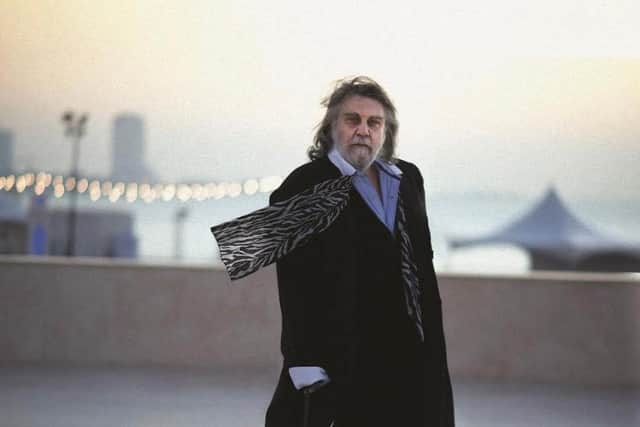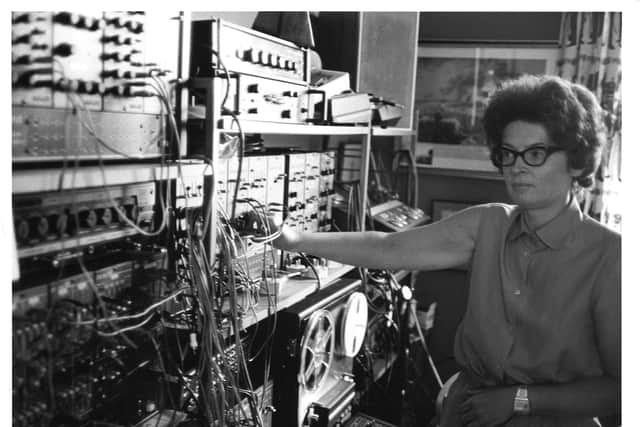Album reviews: Public Service Broadcasting | Vangelis | Janet Beat


Public Service Broadcasting: Bright Magic (Play It Again Sam) ***
Vangelis: Juno to Jupiter (Decca) ***
Janet Beat: Pioneering Knob Twiddler (Trunk Records) ****
It’s all about the electronica this week with a trio of conceptual releases, respectively tracing, chronicling and making history.
Advertisement
Hide AdAdvertisement
Hide AdLondon-based four-piece Public Service Broadcasting follow albums sculpted from samples of old public information films, NASA footage and Welsh mining communities with Bright Magic, a three-part love letter to the magnetic metropolis of Berlin.
Although samples from Wochenende, a 1928 work of sound collage, are threaded through some tracks, Bright Magic largely eschews the samples which have characterised PSB’s work to date in favour of original compositions.
Mainman J Willgoose Esq lived in Berlin for nine months prior to lockdown, writing and recording in the world famous Hansa Tonstudio. The results recall the artists who have made some of their most seminal works in the studio, from Depeche Mode to David Bowie, although opening track Der Sumpf – meaning “the swamp”, in reference to the city’s origins and name – echoes the foreboding ambience of Dark Side of the Moon-era Pink Floyd.


Aspects of Berliner culture are celebrated on Im Licht, a starburst synthesizer tribute to lightbulb manufacturers AEG, and Der Rhythmus der Machinen, a Kraftwerkian ode to heavy industry with some extra guitar heft and guest intoning by Teutonic rock legend Blixa Bargeld.
People, Let’s Dance is their homage to Berlin’s clubbing capital status, featuring the techy twang of a Depeche Mode sample and vocoder vocals by Berlin-based Norwegian singer EERA, who also appears on the elegiac Gib Mir Das Licht accompanied by mournful woodwind.
Actress Nina Hoss supplies the narrative on Ich und Die Stadt, while Andreya Casablanca of Berlin-based garage rockers Gurr fronts the driving electro pop/rock of Blue Heaven. Its airy melody contrasts with the expansive electronica of The Visitor and instrumental suite Lichtspiel. While Brian Eno’s production work on Bowie’s Low album is an acknowledged influence, there are also obvious echoes of non-Berliner Vangelis.
As chance would have it, the Blade Runner/Chariots of Fire composer simultaneously releases his own new album. Juno to Jupiter continues a cosmic journey which has included composing a symphony for NASA’s 2001 mission to Mars and having an asteroid named in his honour.


Advertisement
Hide AdAdvertisement
Hide AdThough directly inspired by the Juno space probe’s mission to explore Jupiter, there is nothing especially jovial about this planet’s suite, which plays out as a conventional electronica-oriented soundtrack, with scattered spoken word samples of NASA engineers. The mood fluctuates from the pomp of Juno’s Power with its brass fanfare and martial rhythm to the stuttering arpeggiated synths, plangent bass runs and twinkling tones of Jupiter’s Veil of Clouds. Soprano Angela Gheorghiou makes periodic graceful cameos as Juno/Hera, the wife of Jupiter, and Zeus Almighty is a pocket symphony in its own right.
Better late than never, the eerie electronic soundworld of composer Janet Beat is finally available for all to hear. Beat is well loved and well remembered as a music tutor at the Royal Scottish Academy of Music and Drama (including to this paper’s classical music critic) but, like her peers Daphne Oram and Delia Derbyshire, has only belatedly been recognised for her experimental compositional work in tape manipulation and modular synthesizers, winning the inaugural Scottish Women In Music Lifetime Achievement Award in 2019.
Beat owned the first commercially available synthesizer in Britain and quickly embraced the liberating possibilities of musique concrete. The playfully titled Pioneering Knob Twiddler compiles unreleased electro-acoustic recordings dating from the seventies and eighties, which are timeless in their style and global in their scope, from the trebly baroque Lighthouses Waltz, via the gamelan chimes of Echoes from Bali, punctuated with curt piano chords, to the dramatic Latin guitar thrum and depth charge echo of A Willow Swept By Train.
CLASSICAL
On DSCH: Igor Levit plays Stevenson & Shostakovich (Sony Classical) *****
During the 1962 Edinburgh Festival, Scots composer Ronald Stevenson famously presented Dmitri Shostakovich with a copy of his Passacaglia on DSCH, Stevenson’s epic piano work based on the Russian composer’s own musical cryptogram. Such opportunism – Shostakovich’s presence in the city had created a media circus – was as much a mark of his personable flamboyance as his genuine respect for the Russian. The Passacaglia is perhaps his most memorable work, and the pianist Igor Levit, in this splendid 3-CD set, presents it in company with Shostakovich’s 24 Preludes and Fugues, invaluable as a means of contextualising the dichotomy that is Stevenson’s intellectual intensity and his instinctive, Busoni-like, largesse. Levit’s compelling grasp of its enormity is equal to his nailing of its complex detail, its ferocious difficulty and the various historical musical references Stevenson makes throughout its 80-minute journey. Levit’s probing, intricate Shostakovich performance is the perfect foil. Ken Walton
JAZZ
Kenny Garrett: Sounds from the Ancestors (Mack Avenue) ****
The ancestral African voices calling to renowned alto saxophonist Kenny Garrett come from church services and work songs as well as the R&B and soul music of his youth, informing vividly coloured and textured music. His core band, with pianist Vernell Brown Jr, bassist Corcoran Hall and drums and percussion from Ronald Bruner and Rudy Bird, is augmented by numerous guests. Intense grooves and percussive tumult combine with Garrett’s lean but melodic alto sound, opening with It’s Time to Come Home, sax singing over a languorous Afro-Latin piano ostinato, while the funky Hargrove, with chanted echoes of Coltrane’s Love Supreme, gives way to the joyful gospel chorusing of When the Days Were Different. The title track, bookended by Garret on solo piano, explodes into an Afro-Cuban workout featuring vocals and congas from Pedrito Martinez, before a haunting reprise of It’s Time to Come Home. Jim Gilchrist
A message from the Editor
Thank you for reading this article. We're more reliant on your support than ever as the shift in consumer habits brought about by coronavirus impacts our advertisers.
If you haven't already, please consider supporting our trusted, fact-checked journalism by taking out a digital subscription at https://www.scotsman.com/subscriptions